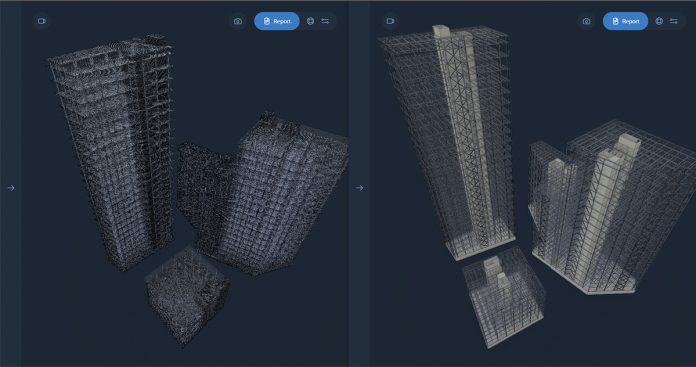Projects usually exceed their budgets. We know this. So why do we let it happen?
From client to subcontractor, in the construction industry, we accept inaccurate project prediction as inevitable.
Kreo Software offers a unique pre-construction planning solution. Kreo’s customers are using its advanced technology to change the way the industry begins construction projects.
Building feasibility studies today
Here’s the typical process Kreo’s customers report when a client starts a building project:
- Client asks designer to give them an idea of a project’s value.
- Designer makes an assumption based on a few parameters and prior experience.
- Designer gives a basic estimation of construction cost to client.
- Client asks designer to reduce the cost of the project by tweaking the design.
- Designer tweaks the design and sends to the QS for cost estimation.
- QS gives new cost to client.
- Client wants further cost reduction and sends back to the designer for redesign.
- Repeat from Step 5 on loop until client is happy.
This process typically takes around six to eight weeks, after which point the client may choose not to go ahead with the project.
If the client goes ahead with the project, it will only be after several rounds of back and forth with the designer and QS. The whole process of redesign and recalculation starts again when they start getting engineers and more to join the project planning.
It’s a pretty inefficient process that costs a huge amount of time and money. We come back to the question: why do we let this happen?
Breaking down cost estimation
While many ignore the problems, Kreo’s customers are not satisfied with the status quo. One customer reviewed 200 types of software to see where they could find a solution that might fix this. Kreo stood out.
Kreo is centred around BIM and its unique power lies in artificial intelligence (AI). Kreo formed partnerships to change the way that building feasibility studies are done in the first place.
“Getting the brief right is the most important bit of the project.”
Despite the attempts of the industry to standardise the way we run construction projects, most projects start with vague guesswork. A decent project brief would at least get the client to a reasonable understanding of their project’s value. Unfortunately, the project brief is often overlooked – and is sometimes completely ignored until well after the project planning has started.
When the project planning brief is vague or missing, it is consultants who end up filling in the gaps. There is little information on who made what decision, so when mistakes are made, no one knows why. A blame game starts at this early stage, as no one wants to take on the risk of a project’s failure.
Transform cost estimation with the right technology
Cost consultants found that their traditional method of cost-led design was fast, but not always accurate early on in project planning. In traditional methods, there is no visual representation of the changes that are made to the cost. It is hard to imagine what changes to the cost might mean for the building when you can’t see it.
Kreo uses AI to create a BIM model from just a few parameters. This enables Kreo’s customers to create a visual brief at the same time as they create their cost plans. Once a basic cost estimate is agreed upon, Kreo’s customers can tweak costs and number of units in real time with their client. For example, to test glass versus brick façades, the client can compare cost against the visual experience.
Communicating the design intent to a designer becomes much easier with an accurate starting point. By showing what the building might look like from the start, the designer does not have to spend as long starting from scratch. This is especially helpful at this early stage, as the designer rarely gets paid for the initial design. Any changes the designer makes to the model affects the cost, which is dynamically updated in Kreo. The platform is online, making collaboration easier and faster than ever before. What once took up to two months now takes as little as a day. Each party wins in this situation:
- The client is able to get a quick indication of whether a project is feasible.
- QS or cost consultant can evaluate more projects.
- The designer can reduce the time they spend on unpaid work.
Finding the right audience
The next step in pushing adoption of Kreo’s feasibility tool will be to find the right clients to work with. Often, clients are reluctant to change if there is upfront cost or work involved. They also need to be convinced of the advantages to changing their process.
“Kreo offers a single version of the truth, from acquisition to design.”
Clients who have vertically integrated design teams and who understand the value of BIM are the starting point. The experts only have to validate the model at the earliest stages, rather than starting from scratch. If the client has a well-defined product and admits to having a formulaic model, it is easy to show them value in using Kreo.
When clients use Kreo for their building feasibility studies, they will understand the value in starting with a BIM model. The best technologies are those you never knew you needed. No one would have tried starting a business feasibility study with a Revit design before. With Kreo, this becomes a reality.
Julia Valentine
Head of marketing
Kreo Software Ltd
Tel: +44 (0)2086 105010
Twitter: @kreo_software
Please note: this is a commercial profile.














